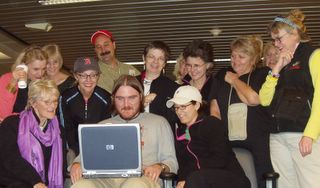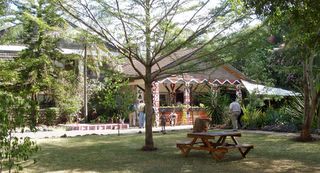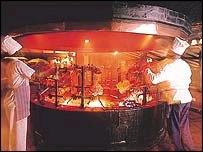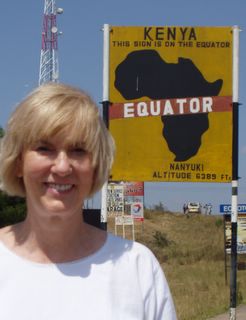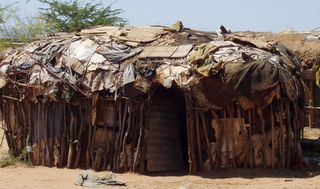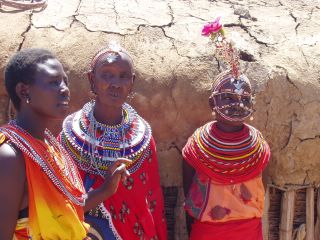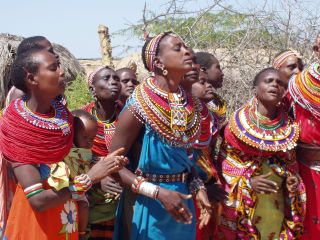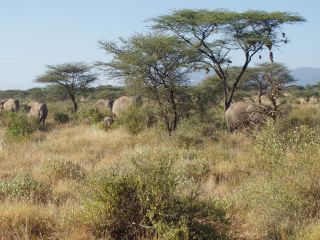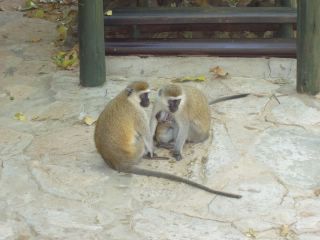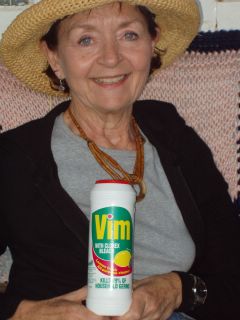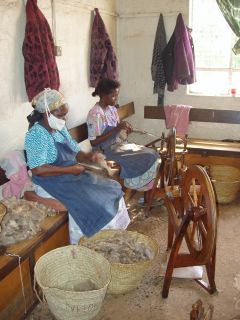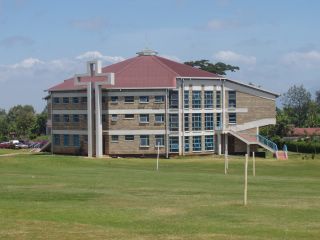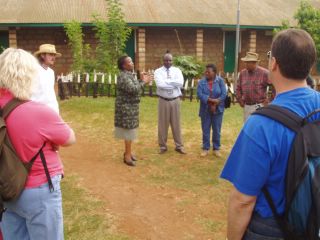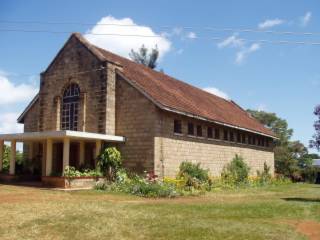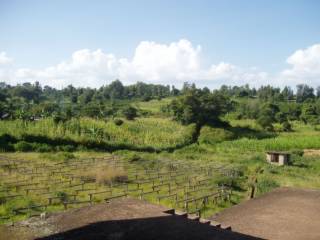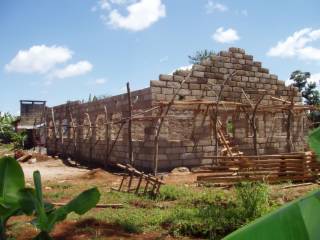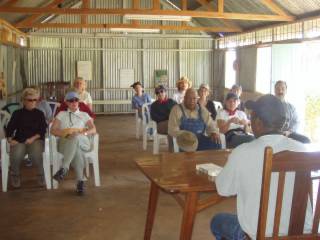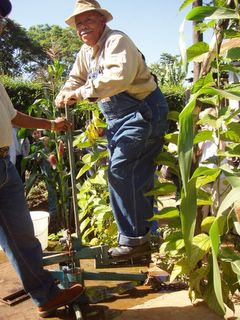
Rebecca delivers gifts during church service
What a wonderful day we had today. Following breakfast, our host families brought us to the Kaaga Church for a combined worship service. I am sad to tell you that there were so many people at the church today that many had to sit outside.
The tem members arrived early and got settled in the front pews. The church is quite lovely though a bit rustic as the congregation has left it exactly as it was when it was constructed in the 1940s. (They did add a cover at the back and a small vestry with a restroom.)
There are banners hanging on the walls which read "I am the vine, you are the branches. Abide in Me," "I will search for my sheep and look after them," Jesus - Light of the world," "Let us praise God's glory," and "Jesus, the best gift of all."
Virgie gave the first reading and the English choir sang. Then Barbara gave the second reading and the Ebachanezar choir sang. We observed a moment of silence for the Tsunami victims and two men sang. Then the English youth singers sang, Marshall gave the third reading, there were intercessionary prayers, the Church Chairman spoke, and we presented our gifts to the church (choir robes, Adult Sunday School materials, Children's Sunday School materials, Susan Lucky's final quilt, a contribution to the church of $1,000 and a greeting card signed by members of the Nichols Hills United Methodist Church).
Children from the School for the Deaf (which we tour tomorrow) presented an interpretive dance, children from the Kaaga Children’s Home which we toured this afternoon) danced, the offering was taken and Scott gave a wonderful sermon. And there was some more singing - -
The 3 1/2 hour service flew by and before we knew it we were all out on the lawn visiting and then in the Fellowship Hall enjoying a combination tea and lunch. The weather (as usual) was perfect. We were surrounded by flowers in bloom and brightly dressed members of the congregation. It was simply glorious.

